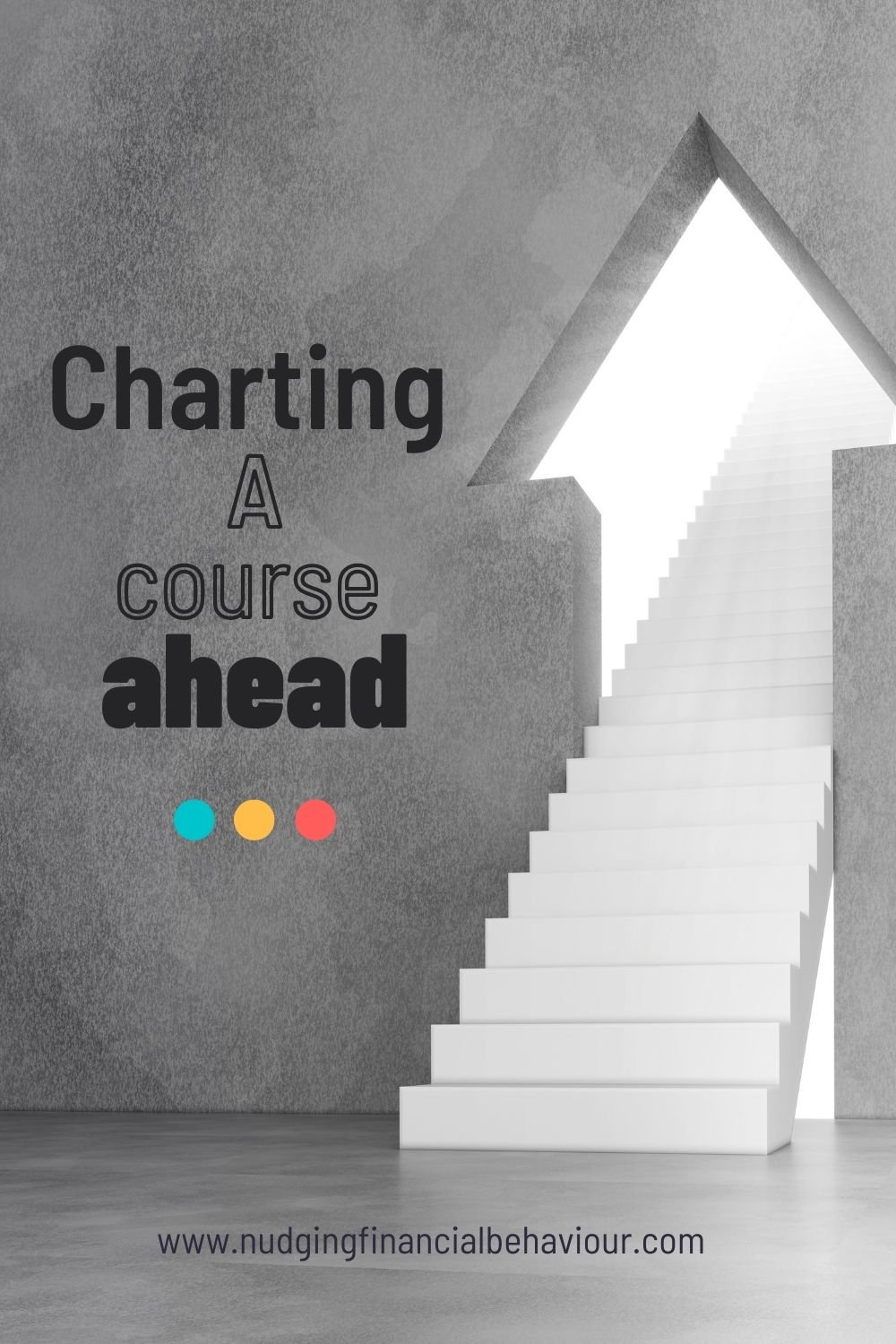And here we are – the final instalment of season 2! We covered a lot this season – starting with risk aversion and loss aversion. We also looked at the disposition effect, as well as availability bias, the primacy effect, recency bias and home bias. Wow! In this post, we’re chatting to all our experts again to get some final nuggets of wisdom from them. We’ll revisit pivotal concepts and extract some additional wisdom to help all of us make better financial decisions!
Our journey begins with a candid exploration of financial missteps shared by our experts. Candice Burgess-Look’s poignant reflection on overdraft struggles and Nerina Visser’s insightful recollection of unnecessary life insurance serve as stark reminders of the financial traps that lurk in everyday decisions.
It was when I was a young brand-new employee. My first job, I was all of 22 years old, fresh out of varsity, and I was sold life insurance. Now, if I think in terms of when and why one needs life insurance, a 22-year-old with no debt and with no dependents and with no nothing. Why should you have life insurance?
She wasn’t in the financial services industry at the time and shared how that experience planted the seeds of her passion for financial education. It’s why she’s so passionate about everyone knowing what they’re doing. Selfishly, we probably need to thank that insurance broker for nudging Nerina into this industry!
Garth Mackenzie’s humorous confession about the financial demands of parenthood added a touch of levity while underlying the importance of prudent financial planning.
I’ve made a lot of financial mistakes, plenty. The most recent one I’ve made is I bought a classic Mercedes Benz. And that thing is just a money pit.
Don’t these stories help reminds us that we’re all human? We can all make mistakes!
Financial mistakes aren’t always big moments in your life. They come in all shapes and sizes – and sometimes they’re not really mistakes, they’re just a change in personal circumstances and that leads to financial issues. Share on XThe goal here is to be aware of how easy these mistakes are to make and to do your best to ensure you have sufficient savings to cover you in rough times. Have an emergency fund.
This leads me quite nicely onto something I chatted to Kristia van Heerden about…

Nothing about personal finances is super difficult… but how you pull those things together… So, let’s say you put interest rates with something like compounding. Okay, again, compounding, you know, it’s not a difficult concept to understand and people keep explaining compounding like oh you have to understand it’s money on the money that you’ve already made. It’s like, yeah, we get it, that’s what compounding is. But compounding also has a negative side. So, if you have debt, debt also compounds, okay. So, you are paying interest on debt.
Do you understand how those things all work together to impact your finances? And once you understand that, suddenly you can make better choices and that’s actually all you’re wanting to do. Managing your money is just about making the best choice with the information that you have.
For those that want a refresher on the power of compounding, you can see a previous post of ours. But Kristia is right, financial decision making doesn’t need to be tricky. Start saving and make smart financial decisions. You’ll quickly be on course to reach those financial goals!
The first rule of investment is don’t lose money; the second rule is don’t forget the first rule.
Central to our discussions this season is the nuanced navigation of risk and reward in financial management. Remember that a riskier trade is one that has great potential for a big gain, but it also has the potential for a big loss in the same time frame. So, with this notion of a risky investment, comes the term risk tolerance. This refers to how much risk you’re able to handle in your investments.
Dr Shreeya Jugnandan mentioned how her risk tolerance has been an evolving journey. She started off very risk averse, but as she’s gained experience and understand investments better, she has become more risk tolerant.
Do I understand Bitcoin? My money’s not going there. But do I have a better understanding of equity and, you know, high risk funds? What’s sitting in a fund? If I’m comfortable with that, then I can proceed.
Garth Mackenzie and Dr Greg Davies offer contrasting yet equally enlightening perspectives shaped by personal experiences, highlighting the profound influence of individual backgrounds on risk perception. Garth Mackenzie considers himself to be of low risk tolerance:
I actually don’t like losing money much, which is strange for a trader to say that.
He comes from a background where they had a lot of financial difficulty growing up. There were always cash flow challenges and that shaped the way he looks at money and finances today. He doesn’t want to put his family through similar financial hardship. Differently, Greg Davies sees himself as a high risk-tolerant individual. He doesn’t mind taking risks in all sorts of areas.
I grew up in a family where my father was an entrepreneur and had three small businesses fail on him one after another and just kept ploughing on. And it was kind of in the family’s DNA in that sense. So that may also have been a strong contributing factor.
Prof Hersh Shefrin reminded us that risk tolerance is an oversimplified concept.
You can sort of talk about a general propensity, but honestly, in some cases, I find that I’m quite conservative, and in some instances, I take quite wild risks. At least my wife thinks they’re wild. But I think that a lot depends on what the situation is. When I’m conservative, I can tell you that loss aversion usually plays a significant role. It’s not so much the risk of an unfavourable outcome, it’s really feeling lousy about losing. If I think I’m really going to, I might lose and I might feel terrible about it, then I’ll just shy away from taking the risk. So, it’s loss aversion more than risk aversion.

Hersh’s nuanced view challenges conventional notions of risk tolerance, emphasizing the interplay between risk and loss aversion in shaping financial behaviour.
Risk tolerance is not set in stone. There are many elements that influence your personal tolerance levels. Context and experience play a big part. Share on XThere’s a lot of emotion that comes with investing and making financial decisions. We’re influenced by past performance, we might be sitting with a student loan or an overdrawn credit card, and we need to account for all of this while managing the emotions that come with it. Figuring out how to ensure that your rational brain wins out when making choices about your money is what we need to strive towards. Of course, that’s easier said than done. But Nerina shared a lovely analogy of weathering market volatility with us…
I think one of my favourite analogies is one of being on a boat on the open sea. I’ve had a couple of experiences where I got quite seasick… I would think to myself, how do I react on a boat on the choppy sea if I’m feeling nauseous? Because let’s face it, that’s pretty much what happens when there’s lots of volatility in markets in particular. And so, I take myself to the place where I imagine walking out onto the deck of the boat, where there is a breeze that I can feel on my face and looking towards the horizon, because it’s when you look down on into the choppy waters immediately beneath you that you get even sicker and that you feel more violently nauseous. Whereas if you look towards the horizon where things appear a lot more calm, it’s as though that soothes my nerves and say it’s okay, it’s okay. And then there’s the silly little thing that says everything will be okay in the end. So, if it’s not okay, it’s not the end.
That’s the truth of the matter with investing. The market is volatile, meaning it goes through ups and downs every day, every week. But, in the long run, in the end, it goes up. Perhaps Prof Terry Odean’s humorous take on managing emotional anxiety will resonate better with some of us…
My preferred approach is just to wake up at 3 a.m. and worry for a couple of hours.

We chatted about three biases, being availability bias, the primacy effect, and recency bias. Thinking about recency bias and the impact of the news and social media on our decision making, Hersh is quite adamant it’s not worth the opportunity cost.
I’m not a serial scroller. I’m very careful with social media. Now, I’ll tell you… a lot of it has to do with opportunity cost. There are a lot of things I want to work on. And if I get caught up in social media, it takes time away from doing the things that I really want to do.
Nerina advised that different types of social media should be read for different purposes.
What’s really crucial there is that you identify quite well who it is that you follow so that you are exposed to the type of content providers that give you the sort of information that you’re looking for and so on.
I hope Nudging Financial Behaviour is on your list of content that you want to be exposed to??!! Social media does have its place in our news and information consumption. It’s all about being mindful and discerning in information consumption.
We ended the season by looking at home bias and how having a well-diversified investment portfolio is extremely important! If you let home bias win, you could end up with some serious problems. Listen to Hersh’s answer when we asked how he goes about assessing his portfolio…
Oh, that’s easy. Well, I use a financial planner. So, I don’t just manage my own portfolio 100%, although I have a lot of input. And so, I rely on low-cost ETFs and mutual funds that are well-constructed by a really high-quality optimising engine and monitor it so that it stays within reasonable bounds by engaging and rebalancing intermittently if that’s what’s required.
Hersh’s pragmatic approach to portfolio assessment underscores the value of expert guidance in navigating complex financial landscapes. Getting that outside eye to evaluate and help you take your personal emotions out of the equation is invaluable. What simple and effective advice. If you want to save money and have proper estate planning and income in retirement, a financial planner should be your first point of call.
The stat at the time of this post was that “70% of traders lose money”. Steve Ward’s sobering assessment of trading realities serves as a cautionary reminder of the discipline and skill required for success in financial markets.
I think it’s a bit seductive… it looks like it’s relatively easy, and it’s often sold that way… And it feels like it could be easy in terms of the sort of knowledge base, but those of us involved in that world know actually to be good at it, you’ve got to be very skilful, very knowledgeable and it takes time.
It’s a lot harder than it looks. And sentiment is like that. Sentiment is a lot harder to predict than it seems. It’s seductive, but it gets you. It manipulates you.
It’s important to know that losing money is part of trading – it just doesn’t need to be the over-riding fact of trading. I really hope this podcast is helping you manage your emotions when trading and investing…

So, that really is it for season 2 of the Nudging Financial Behaviour podcast. Thank you for accompanying us on this journey. I really hope you found our discussions on biases interesting and helpful. When you’re aware of them, you can take steps to prevent them from interfering with your decision-making process. Don’t forget to subscribe to our channel so you’ll know next when we’re posting new content.
Narrow framing – Narrow framing, the compromise effect, glossing, and the enabling frame. We need frames to make sense of the world. But they cause problems.
The anchored trader – Anchors tie us down and can have serious consequences for investors and traders. Don’t be the anchored trader.
Share your answers in the comments below.
I am passionate about helping people understand their behaviour with money and gently nudging them to spend less and save more. I have several academic journal publications on investor behaviour, financial literacy and personal finance, and perfectly understand the biases that influence how we manage our money. This blog is where I break down those ideas and share my thinking. I’ll try to cover relevant topics that my readers bring to my attention. Please read, share, and comment. That’s how we spread knowledge and help both ourselves and others to become in control of our financial situations.

Dr Gizelle Willows
PhD and NRF-rating in Behavioural Finance
Receive gentle nudges from us:
[user_registration_form id=”8641″]
“Essentially, all models are wrong, but some are useful.” – George E.P. Box
